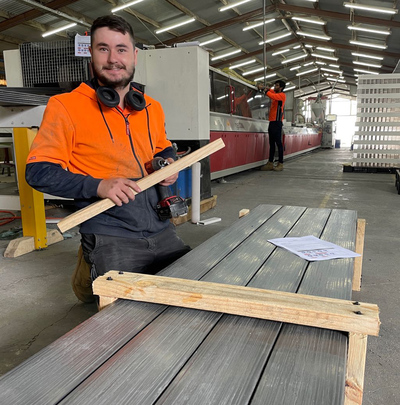This post was originally published on Sustainability Matters

The Vinyl Council of Australia (VCA) is collaborating with several Australian industry partners to recycle waste PVC pharmaceutical blister packaging.
VCA member Think Fencing, based in Portarlington, Victoria, has partnered with Pharmacycle to recycle blister packaging collected via Pharmacycle’s drop-off points, located in pharmacies, hospitals and local council sites across Australia.
Chemist Warehouse has recently joined early adopters Bloom The Chemist and National Pharmacies as a drop-off location, introducing the program in 100 of its stores across Victoria.
“We are seeing significant interest from consumers, pharmacies and the healthcare sector in being able to recycle this type of material, in part driven by the focus on blister packaging in the ABC’s War on Waste program,” said Pharmacycle’s Business Development Manager Michael Klapsogiannis.
To date, Pharmacycle has recycled over 32 tonnes of blister packaging, adding up to more than 21 million individual blister packs.
From blister packs to fencing
Once the packaging has been collected, Pharmacycle weighs and sorts it, removing any contaminants, such as unused pills or other medical packaging, to ensure that the material streams are as clean as possible. The material then undergoes a size reduction and granulation process, before the PVC (and a small volume of other plastics) are separated from the aluminium through an electrostatic separation process — the same machinery used by PanelCycle to separate aluminium composite panel (ACP) cladding. The aluminium is then sent to Weston Aluminium in NSW for reuse, while the PVC component is sent in powdered form to Think Fencing.
Using an AI-driven prototype device developed by the CSIRO, Think Fencing analyses the material to understand its key properties, because each batch varies slightly depending on the level and type of contamination. The results of this analysis are used to optimise the mix of the material with other recycled content streams, including credit card surplus material from Placard, window profile offcuts from VCA member aluplast and necessary additives, to ensure the blend meets Think Fencing’s required specifications.
Think Fencing’s fencing and decking made from the PVC recyclate.
“With such a variety of material streams, it’s really important that we can understand the properties of the recyclate we’re using,” said Think Fencing Chief Technical Officer Jack Fitzgerald.
“The CSIRO analyser has been a game changer in the way we understand and incorporate recycled material.”
Since the introduction of the analyser, Think Fencing’s recycled content usage has increased from 15 to 85% in the company’s primary PVC fencing ranges, and makes up a similar proportion in the soon-to-be released OneDeck decking range. Virgin material is used to ‘cap’ the products to ensure a consistent visual finish.
Given the cost of the recycled feedstock is almost 70% cheaper than the virgin material Think Fencing used to source, the company is planning to use a variety of other recycled PVC materials, including PVC pipe scrap, playing cards and vinyl flooring.
“This collaboration highlights the recycling potential of diverse product types when they’re kept out of mixed waste streams — given that existing recycling infrastructure is currently ill equipped to manage these materials effectively,” said Vinyl Council of Australia Chief Executive Jim Coulston.
Future expansion
Given the project’s success, Think Fencing plans to develop a new recycling plant and warehousing facility in Victoria along with a warehousing facility in Brisbane to allow more PVC products to be collected and recycled. Funding and industry partners are being sought to support this growth.
The CSIRO analyser is currently undergoing a patent process, with a formal demonstration of the technology to be presented by CSIRO’s Melissa Skidmore at the PVC AUS 2024 conference in June.
Pharmacycle plans to increase its number of collection points from 400 to 1000 by mid-2024, and is confident that with industry support it will be able to continue growing its program.
To learn more about Think Fencing, visit onedeck.com.au.
Top image caption: Pharmacycle sorting line.





0 Comments